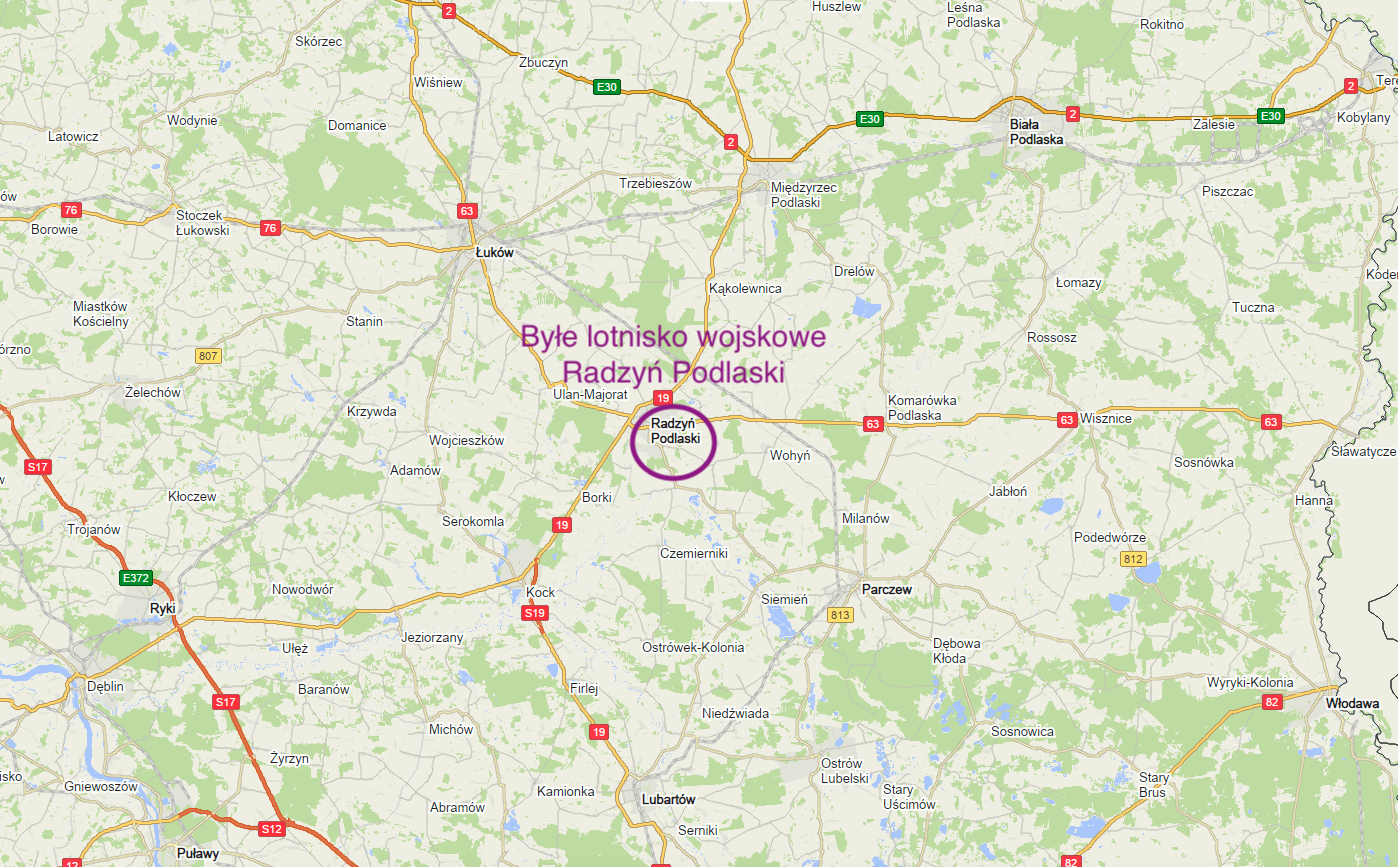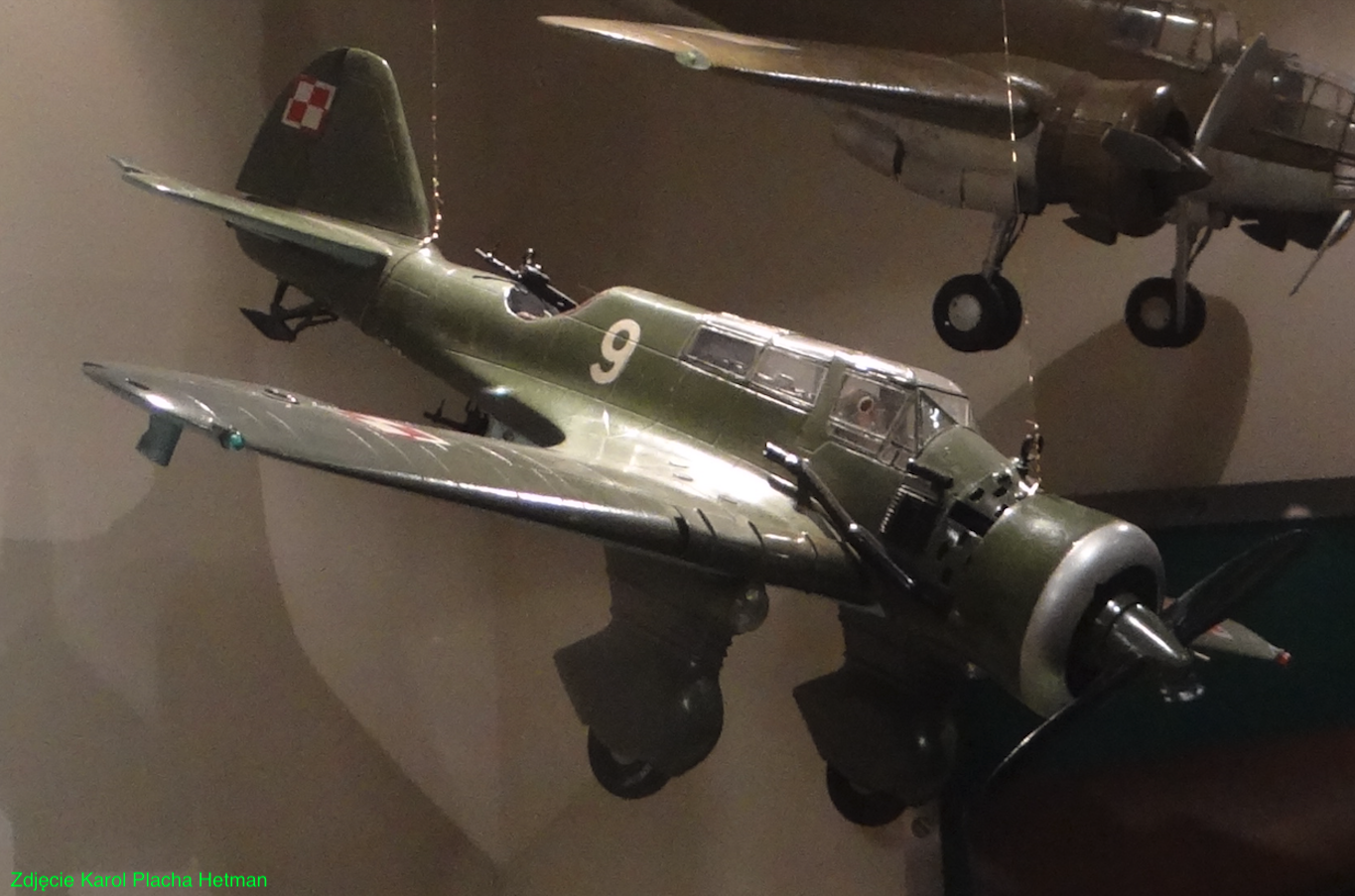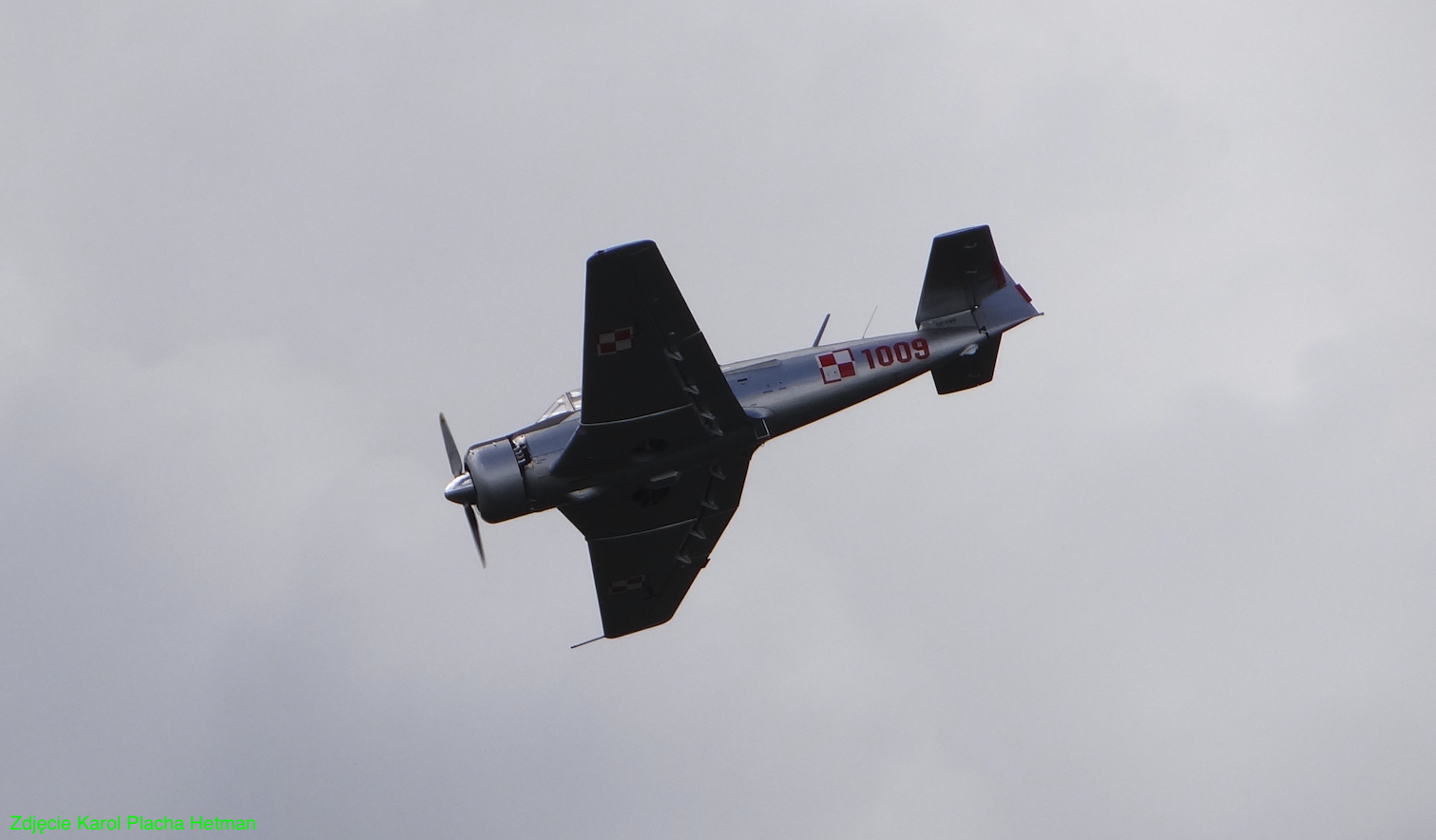Radzyń Podlaski 2017-12-10
Lotnisko Radzyń Podlaski. Lotnisko Marynin.
Współrzędne geograficzne: 51.747N 22.631E. Elewacja 158 m.
Radzyń Podlaski to Miasto w Województwie Lubelskim, w Powiecie Radzyńskim. W 2017 roku, Miasto liczyło około 16 400 mieszkańców.
Radzyń Podlaski leży w Ziemi Łukowskiej, około 70 km na północ od Lublina oraz około 70 km na południowy-zachód od Białej Podlaskiej. W latach 1975-1998 Radzyń Podlaski należał do Województwa Bialskopodlaskiego. Przez Radzyń przepływa rzeka Białka. Średnia wysokość nad poziom morza wynosi 140-160 m. Mieszkańcy Gminy utrzymują się głównie z rolnictwa. Powierzchnia Miasta to 19,29 km 2. Miasto stanowi 2% powierzchni powiatu.
Przez Radzyń Podlaski przebiega Droga Krajowa Nr 19 (biegnąca południkowo przez Województwa: Podlaskie, Mazowieckie, Lubelskie oraz Podkarpackie) oraz Droga Krajowa Nr 63 (przebiegająca przez Województwa: Warmińsko-Mazurskie, Podlaskie, Mazowieckie i Lubelskie). Przy samym Lotnisku Marynin przebiega Droga Wojewódzka Nr 814 (łącząca Radzyń Podlaski z Glinnym Stokiem).
Radzyń Podlaski – historia.
Do końca XIV wieku tereny te nie za bardzo nadawały się do stałego osadnictwa, gdyż leżały na styku Polski, Litwy i Rusi. Dopiero w czasach panowania Władysława Jagiełły zmieniła się sytuacja i stopniowo na te tereny zaczęli przybywać osadnicy z Małopolski i Mazowsza. Pierwsze osady datują się na 1380-1390 rok. Zaczęły wówczas powstawać parafie, a wraz z nimi budowano pierwsze drewniane kościoły. Początkowo osada, w miejscu dzisiejszego Miasta, nazywała się Kozietule, z uwagi na rozwijający się tutaj handel kozami, dla którego urządzono targ. Pierwotna nazwa Radzyn pojawiała się około 1450 roku. Z czasem nazwa uległa zmiękczeniu i wypowiadano ją Radzyń. Mało brakowało, a osada nazywałaby się Kozi Rynek. W 1468 roku osada Radzyń otrzymuje prawa miejskie na Prawie Zachodnim z rąk króla Kazimierza Jagiellończyka i była własnością królewską. W połowie XV wieku w Radzyniu powstała także parafia prawosławna i wybudowano cerkiew. Pierwszy murowany kościół Rzymsko-Katolicki ukończono w 1641 roku, a jego konsekracja nastąpiła w 1644 roku.
Rozwój Miasta hamowały liczne wojny i przemarsze wojsk. W 1741 roku Miasto Radzyń Podlaski stało się własnością rodu Potockich, którzy wybudowali tutaj okazały pałac. Pod koniec XIX wieku przez Radzyń Podlaski poprowadzono linę kolejową z Lublina do Łukowa. Pierwsza szkoła w Radzyniu powstała w 1915 roku podczas wielkiej wojny światowej. Najpierw było gimnazjum, a w 1917 roku szkoła średnia. Po odzyskaniu przez Polskę niepodległości, właściciele Miasta, ród Szlubowskich, przekazał zniszczony pałac Potockich państwu. Pałac wyremontowano i stał się siedzibą władz regionu. W okresie II Rzeczpospolitej Miasto nadal miało zabudowę drewnianą. Domów murowanych było niewiele. Po dużym pożarze w 1930 roku Miasto otrzymało większość domów murowanych, dwukondygnacyjnych.
Germańcy Miasto zbombardowali w dniu 9 września 1939 roku, kiedy ulice były zatarasowane tysiącami Polskich uciekinierów. Szwaby w Radzyniu Podlaskim zjawili się dopiero po słynnej bitwie pod Kockiem. Ruch oporu przeciw okupantowi zorganizowany został już w październiku 1939 roku. Pierwsze oddziały były złożone z harcerzy i osób dorosłych. Pierwsza egzekucja dokonana przez germańców na ludności Polskiej odbyła się w pobliskim lesie w dniu 5 lipca 1940 roku. Ponad 100 miejscowości powiatu było miejscami masowych egzekucji. Na skutek represyjnych działań okupanta zginęło ponad 24 000 mieszkańców powiatu.
W czasie okupacji germańskiej, Radzyń Podlaski stał się jednym z miejsc koncentracji wojsk niemieckich do ataku na CCCP. Zwłaszcza stacja kolejowa i okoliczne zabudowania stały się magazynami broni i zaopatrzenia wojskowego.
W 1944 roku, na Ziemi Radzyńskiej, żołnierzy AK i NSZ było już 4 200. Podlegali oni pod Okręg Lubelski AK.
Germańcy wycofując się podpalili pałac Potockich, a pożar doprowadził do jego ogromnych zniszczeń. W dniu 23 lipca 1944 roku, Radzyń Podlaski był „wyzwalany” przez wojska sowieckie i żołnierzy Armii Krajowej. I rozpoczęła się nowa okupacja.
Pałac Potockich został naprawiony na miarę możliwości lokalnych władz. Stał się on siedzibą licznych instytucji, które tylko wykonywały remonty bieżące. Mimo to popadał on w ruinę. Od 1980 roku, rozpoczęto systematyczne prace remontowe. Powołano do istnienia Fundację Ochrony Zespołu Pałacowo-Parkowego w Radzyniu Podlaskim. W odremontowanych pomieszczeniach pałacowych lokowane są radzyńskie instytucje służące kulturze.
Lotnisko Marynin, Radzyń Podlaski.
Lotnisko w Radzyniu Podlaskim zostało założone w czasie II Rzeczpospolitej Polskiej. W 1935 roku, Sztab Wojska Polskiego wyznaczył kilkanaście miejsce na lotniska polowe. Jednym z nich było Lotnisko koło Radzynia Podlaskiego na Maryninie.
Było to lotnisko typowo polowe, często wykorzystywane podczas ćwiczeń wojskowych i lotniczych. W 30-latach Lotnisko Marynin było często użytkowane przez eskadry bombowe. Między innymi przez 55. Eskadrę Bombową z 5. Pułku Lotniczego (Lida), która eksploatowała samoloty Karaś.
Germańcy zajęli Radzyń w dniu 7 października 1939 roku, przez 213 DP 8 armii gen. J. Blaskowitza. Ustanowił on w Mieście Zarząd Wojskowy. W czerwcu 1941 roku, Lotnisko Marynin ponownie uruchomiono. Zajęły je jednostki Luftwaffe, oraz oddziały 2 grupy pancernej H. Guderiana 9 Armii „Środek" i pułk piechoty „Gross Deutschland" (z. XIII Korp. Pancernego). Szykowano się do akcji Barbarossa. Od jesieni 1943 roku, stacjonowały tu: 3 bat. 25 pułku SS policji (Radzyń), oddziały ochrony lotniska i oddziały chroniące obiekty Wehrmachtu”.
Prawdopodobnie w czasie okupacji lub z końcem 40-lat do Lotniska Marynin doprowadzono bocznicę kolejową. Służyła ona do zaopatrywania składu MPS w paliwo dla samolotów.
W czasie okupacji niemcy rozbudowali nieco lotnisko. Przede wszystkim wybudowali betonową drogę kołowania w przyległym lesie. Przy tej drodze wybudowali stojanki dla samolotów, dobrze ukryte przed rozpoznaniem z powietrza. Rozbudowali także składnicę paliw i magazyn amunicji (bomb skład). Zbudowali kilka podziemnych ukryć. W Maryninie stacjonował SKG 210 wyposażony w samoloty Bf-110 oraz III/KG 53 w samoloty He-111.Po przejściu frontu Lotnisko Marynin zostało przejęte przez Rosjan, którzy okresowo je wykorzystywali do około 1949 roku.
Polskie samoloty w Maryninie pojawiły się między 1951, a 1953 rokiem i były to zarówno samoloty szkolne jak i bojowe. Wśród bojowych były Iljuszyn Ił-2 i Iljuszyn Ił-10. Lotnisko planowano znacznie rozbudować.
W 50-latach Lotnisko Marynin było miejscem czasowego stacjonowania 59. Lotniczego Pułku Szkolno-Bojowego OSL w Dęblinie.
W 1959 roku, Lotnisko Marynin zostało wyznaczone, jako podstawowe lotnisko dla nowo powstałego pułku szkolnego podległego Szkole Oficerskiej w Dęblinie. Był to 52. Lotniczy Pułk Szkolny. Na jego stanie były samoloty TS-8 Bies oraz Jak-11. Dowódcą Pułku mianowano majora pilota Stefan Czarnecki, który był awansowany do stopnia podpułkownika.
52 Lotniczy Pułk Szkolny został utworzony na bazie 24. Eskadry Szkolenia Pilotów Rezerwy w Ułężu oraz 25. Eskadry Szkolenia Pilotów Rezerwy w Podlodowie. Etat nr 20/454. Pułk składał się z dwóch Eskadr.
W kwietniu 1959 roku, 52. Lotniczy Pułk Szkolny przebazowano na Lotnisko Oleśnica, ale już w czerwcu 1959 roku, Pułk powrócił na Lotnisko Ułęż i Podlodów.
W dniu 13 lipca 1960 roku, 2. Eskadra z 52. Lotniczego Pułku Szkolnego, dowodzona przez kpt. pil. Ryszarda Mierzwińskiego został przydzielona do OSL im. Żwirki i Wigury w Radomiu. Natomiast w skład 52. Pułku Szkolenia Lotniczego włączono Eskadrę Szkolną bazującą na Lotnisku w Radzyniu Podlaskim, dowodzoną przez mjr pil. Zygmunt Mazurek.
W 1961 roku, zreorganizowano Pułk na Etat nr 20/506, który przewidywał 563 żołnierzy i 17 pracowników cywilnych.W dniu 2 października 1961 roku, 52. Lotniczy Pułk Szkolny otrzymał sztandar.
W 1962 roku, 52. Lotniczy Pułk Szkolny został rozformowany. W związku z reorganizacją oficerskich szkół lotniczych, Główny Inspektor Lotnictwa, w terminie do 30 września 1962 roku, rozformował 52. Pułk Szkolny Oficerskiej Szkoły Lotniczej im. Jana Krasickiego. Jego jedna eskadra z Radzynia Podlaskiego stała się zalążkiem organizowanego 47. Pułku Lotnictwa Łącznikowo-Sanitarnego w Modlinie. Samoloty szkolne Lotnisko Marynin opuściły ostatecznie w 1963 roku.
Wówczas to całkowicie zrezygnowano z planów rozbudowy Lotniska Marynin. Jego głównym elementem miała być nowa, utwardzona (betonowa) droga startowa (DS., RWY). Planowano także rozwinąć system nawigacji radiolokacyjnej.
Koszary w Radzyminie Podlaskim zajął 57. Batalion Remontowo-Budowalny OTK (JW. 2899). Mieścił się tutaj także 84. Oddział Obrony Cywilnej, Wojskowy Zakład Usługowo-Produkcyjny. Jednostka Wojskowa stacjonowała tutaj do około 1991 roku.
W 1995 roku, koszary i inne budynki zostały zajęte przez Hufiec Pracy, a obecnie jest to Ośrodek Szkolenia i Wychowania. Dawny budynek koszarowy został całkowicie przebudowany.
Około 1995 roku, Lotnisko Marynin zostało przekazane do Agencji Mienia Wojskowego. W latach świetności pole wzlotów miało wymiary około 1 400 m x 1 000 m i powierzchnię około 140 hektarów. Do tego można doliczyć cały kompleks leśny Niewęgłosz. W 2000 roku Lotnisko Marynin zostało wystawione na sprzedaż. Obecnie (2018 rok), na znacznie okrojonym terenie, Lotnisko Marynin jest własnością prywatną i ma status lądowiska.
Las przy Lotnisku nadal jest niebezpieczny z uwagi na liczne niewypały (stara terminologia) i niewybuchy (nowa terminologia). Amunicja jest pozostałości Polskiej (wojna obronna), germańskiej (okupacja) i sowieckiej. Saperzy przyjeżdżają do likwidacji niewybuchów tylko po ich znalezieniu i zgłoszeniu. Las nie był nigdy całkowicie oczyszczony. Według relacji mieszkańców od niewybuchów zginęło już kilkanaście osób. Najłatwiej można trafić na bomby lotnicze, amunicję do działek lotniczych i granaty. Ostatnie potwierdzone znalezisko bomb lotniczych z okresu II wojny światowej miało miejsce w dniu 3 września 2016 roku. Były to trzy bomby o wadze około jednego kilograma każda. Policjanci apelują o ostrożność i przypominają, że odnalezionych niewybuchów nie należy dotykać czy też próbować przenosić. Ważnym jest również, aby do czasu przybycia właściwych służb, miejsce zabezpieczyć przed przypadkowym dostępem osób nieświadomych zagrożeń. Las stał się także miejscem „utylizacji” śmieci dla okolicznych mieszkańców. Można także znaleźć ślady działalności Wojska Polskiego z 70-tych i 80-tych lat.
Podstawowe dane – Lotnisko Marynin, Radzyń Podlaski.
Lądowisko prywatne. Współrzędne geograficzne 51°45’35"N 22°37’58"E. Elewacja 150 m npm 470 ft. RWY 098/278, 390 x 30 m, N51°44’53.2" E22°37’45.6". Kontakt tel.+48 604445375.
Uwagi – Lądowisko prywatne na terenie byłego lotniska wojskowego. W strefie TSA04A. Wyrównane, wałowane, koszone. Miejsce na rozbicie namiotu, dostęp do wody. Linia elektryczna i słup elektryczny, które można spotkać na starszych zdjęciach, są zdemontowane i nie stanowią już przeszkody na podejściu 28.
Opracował Karol Placha Hetman




